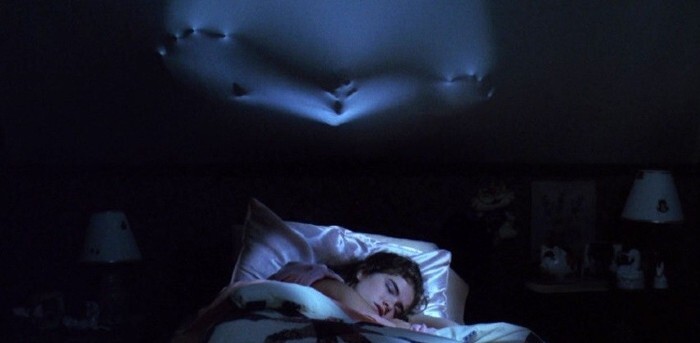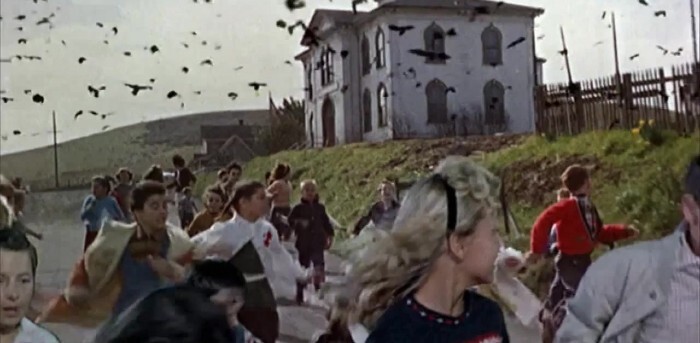15 Real-Life Inspirations for Horror Movies

If you’re the scaredy cat of your friend group, you’re probably very familiar with three words that inevitably come up whenever you get together to watch horror movies: “It’s not real!” But ideas have to come from somewhere, and oftentimes, the terror on the screen was inspired by the very real terror that sometimes ended real people’s lives. Sharing this fact will undoubtedly make you more popular at parties.
A Nightmare On Elm Street

(New Line Cinema)
Wes Craven got the idea for a monster that kills you in your nightmares from a series of articles in the L.A. Times (almost certainly these ones) describing an epidemic of Southeast Asian immigrants who fled genocide only to die in their sleep, some of whom complained of nightmares and chugged coffee to avoid sleep. No one has ever figured out exactly what killed them, but theories range from exposure to chemical nerve agents to malnutrition to decidedly not sleep demons because scientists are no fun.
A Nightmare On Elm Street Again

(New Line Cinema)
Meanwhile, Freddy Krueger’s hat-and-sweater deal was inspired by the clothes worn by a man Craven spotted stumbling home from the bars one night as a child who noticed the boy watching him through the window and decided to give him a good scare by watching him back and then pretending to break into his apartment. That’s why you never trust a man in a fedora.
Scream
Billy Loomis and Stu Macher were based on another pair of murderous (and slightly less sexually ambiguious) teenage boys who thought they were smarter than they were, Nathan Leopold and Richard Loeb, who killed Loeb’s cousin in 1924 just to (not) prove they could get away with it. “If you Google Leopold and Loeb, you will see,” screenwriter Kevin Williamson said. “And you’ll read about it and you’ll get, okay, that’s Billy and Stu.”
Scream Again

(Dimension Films)
The story of Scream was also inspired by Danny Rolling, A.K.A. the Gainesville Ripper, who terrorized the University of Florida campus and killed five students in 1990 for seemingly no reason. After all, it’s a lot scarier when there’s no motive.
The Birds

(Universal Pictures)
When Alfred Hitchcock was living in Northern California in 1961, a nearby town was beset by thousands of seabirds vomiting, crashing into things, dropping lifeless to the ground, and generally acting like they’d just come from a really good party, inspiring his movie two years later. The cause turned out to be algae, not a penchant for metaphor, which was almost as toxic as Hitchcock.
Hostel
After Cabin Fever, when Eli Roth was looking for his next project, a friend sent him a link to “a site where you could go to Thailand and, for ten thousand dollars, walk into a room and shoot somebody in the head.” Of course, it could have been fake, but as Roth explained, “It doesn’t matter … the point is that somebody built a website about it,” and Hostel ended up being a liiiittle more elaborate, because Roth gonna Roth.
Child’s Play

(MGM/UA Communications Co.)
There really is a famously creepy doll that may or may not be possessed by a serial killer. It belonged to an eccentric and wealthy artist named Robert Eugene Otto from childhood, when he blamed all manner of mischief on the doll, and well into adulthood, when he spoke to it like it was a person and even insisted his caretaker tend to the doll. After his death, it was donated to a museum, who carries on the tradition of using the doll as a scapegoat.
Poltergeist

(MGM/UA Entertainment Co.)
The most cursed movie of the ‘80s was based on events experienced by the Herrmann family in the ‘50s, though they weren’t nearly as cool. Mostly, the Herrmanns’ poltergeist just made bottles explode, and there was no indigenous graveyard involved, so it was probably just humidity or stupid kids.
The Exorcist
In the ‘40s, a boy known as “Roland Doe” really did undergo an exorcism, during which words appeared scratched into his skin and he attacked the priest and spoke about Satan in an unearthly voice. Unlike poor Regan, however, “Roland” was known as an attention-seeking bully, so he was almost certainly doing it all himself.
The Exorcism of Emily Rose

(Sony Pictures Releasing)
More sadly, there really was a young woman, Anneliese Michel, who was diagnosed with epilepsy and came to believe she was possessed by demons. It was possibly entirely because of her specific disorder, which tends to cause “hyperreligiosity,” A.K.A. being thirsty for God. She endured a whopping 67 exorcisms, during which she suffered many self-inflicted injuries, and ultimately died of self-imposed starvation. On the bright side, she did become a saint of sorts, with visitors leaving requests for prayers on her grave, so she’d probably be pretty happy with that.
The Amityville Horror

(American International Pictures)
The big white house in Amityville, New York is on every cross-country ghost tourist’s checklist, so obviously, it’s real, but there also really was a mass murder there in 1974, just before the Lutz family moved in. Of course, what happened after that is definitely all bullshit, not the least because Ed and Lorraine Warren were involved.
The Conjuring
Another Ed and Lorraine Warren joint, The Conjuring, was based on their supposed experiences with the Perron family of Rhode Island. It was an especially rich source of material because the Warrens claimed to have helped them out over a period of 10 years, during which the Perron family continued living in what they insisted was an extremely haunted house for some reason.
Annabelle

(Warner Bros.)
Finally, according to the Warrens, the real Annabelle doll was owned by a young nurse in the ‘70s who told them the doll kept moving around the apartment, left notes pleading for help, and attacked her boyfriend, and they claimed misfortune continued to swirl around the doll after they took it from her. It was actually a Raggedy Ann doll, but that’s not as scary.
Psycho, Texas Chainsaw Massacre, and Silence of the Lambs
Three of the most influential horror movies of the last century were all inspired by one guy: Ed Gein, A.K.A. the Butcher of Plainville. In truth, Gein was nowhere near as vicious as those villains; he was mostly a graverobber and only killed two people. He was a fucked-up dude who was way too comfortable with dead bodies, though, so elements of his crimes showed up in Psycho (the mother obsession and taxidermy), Texas Chainsaw Massacre (the decomposing DIY), and Silence of the Lambs (the pursuit of a ladysuit).
Silence of the Lambs

(Orion Pictures)
Meanwhile, the relationship between Clarice Starling and Hannibal Lecter is mirrored by Ted Bundy’s incredibly unexpected offer to help police catch the Green River Killer in the ‘80s. Of course, Bundy was no Lecter -- his profile was only marginally useful, and Gary Ridgway wasn’t caught for nearly another 20 years. But that wouldn’t be a very exciting movie.
Top image: New Line Cinema